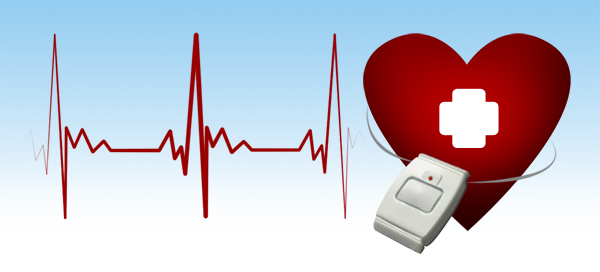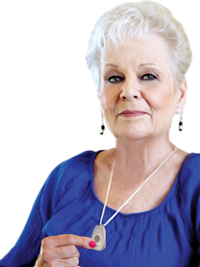Reprint of an article by Lisa Collier Cool
from Yahoo Health
Introduction by Heidi Nestor, Writer and Editor,
Life Alert
Why is it that when we age we become wiser but our
body becomes weaker? And
yet, sometimes our own wisdom fails us as seen with comedian Rosie
O’Donnell’s recent heart attack, which was no laughing matter.
Although the signs indicated a coronary problem, she still didn’t
believe it. People generally have that automatic “it can’t happen to me”
belief. But then, how are
women to know they are having a heart attack when the symptoms are so
much different than the standard indicators that are seen and heard
about in the media? Case in
point, a relatively healthy 58 year old woman, who was a smoker, was
experiencing flu-like symptoms including aches and pains, fatigue,
chills, and congestion. She didn’t go to the doctor; instead, she took
flu/cold medicine hoping it would clear up.
A few days later she collapsed and died from a massive heart
attack.
The medical field is still researching all the
warning signs that may be present for female heart disease.
This is an arena that still needs to be explored thoroughly but
until the time comes when we know for sure what all the signs are for
female heart disease, there is still one thing you can do for yourself
to get help fast, 24/7, and that’s to get Life Alert.
With Life Alert, our medical alert pendant will summon help fast
whether you are have a heart attack or just heart burn, we’ll even get
help to you if you don’t know what the problem is.
It’s better to be safe with Life Alert, than run the risk of not
getting help for something that could be serious.

The Deadly Disease Most Women Ignore.
By Lisa Collier Cool
Aug 22, 2012
Day in Health
Rosie O’Donnell says it’s a “miracle” that she survived, after
ignoring heart-attack warning signs because she didn’t recognize her
danger. When the former talk-show host, 50, developed soreness and
aching in her chest and arms after helping “an enormous woman” out of a
car, she chalked it up to muscle strain.
When the ache persisted—and she became nauseated with clammy
skin—O’Donnell was worried enough to Google women’s heart attack
symptoms. “I had many of them, but really? –I thought – naaa,” she wrote in her
blog.
Like 50 percent of women who have heart
attacks, she
didn’t call 911. Instead, she took an aspirin, then waited until the
next day to get help for what turned out to be a 99 percent blockage in
her LAD coronary artery, a type of heart attack called the
“widow-maker.”
The Myth that Puts Women’s Lives at Risk
Often thought of as a man’s problem, heart attacks kill
267,000 American women annually: more than all forms of cancer
combined.
Every year since 1994, heart attacks have killed more US women than men.
Yet many women still think that breast cancer (which kills 40,800 women
a year) is their biggest health threat.
Most women—and even doctors—don’t know the gender-specific symptoms
of a heart attack, says cardiologist Noel Bairey Merz, MD, director of
the Barbra Streisand Women’s
Heart
Center at the Cedar Sinai
Heart Institute. “Fewer than half of women have the classic Hollywood
heart attack with crushing chest pain—often described as feeling like an
elephant is sitting on you—that’s typical in men.”
Women’s Heart Attack Symptoms Often Misdiagnosed
Instead, women typically have less dramatic heart attack symptoms
that may not include any chest pain. As a result, women are
misdiagnosed at a far higher rate than men—and are more likely to die
after a heart attack than men are, according to
a new study of 1.4 million heart attack patients.
“Relatively young women like Rosie O’Donnell have the highest rate of
heart-attack fatalities, because their symptoms are frequently
misdiagnosed,” both by women themselves and by emergency physicians,
says Dr. Merz.
One shocking study reported that up to 50 percent of the time,
women’s heart attack symptoms go unrecognized by emergency and medical
professionals. And nearly two-thirds of heart attack deaths in women
occur in women with
no history of chest pain, reports womenheart.org.
Young Women Also At Risk
If you think you’re too young to have a heart attack, here’s what you
need to know: Of the 435,000 American women who have heart attacks
annually, 83.000 are under age 65 and 35,000 are under age 55. Under age
50, women’s heart attacks are twice as likely to be fatal as in men.
To protect yourself, get checked for such common risk factors as high
blood pressure, high cholesterol, and high blood sugar. Alert your
doctor if you have a family history of heart disease, particularly if
relatives were affected at an early age. A healthy diet, regular
exercise, and keeping your weight down are the best ways to trim heart
attack risk.
And if you smoke, here’s yet another reason to kick the habit:
Women
who smoke risk having a heart attack 19 years earlier than non-smoking
women.
A study that tracked nearly 120,000 women ages 30 to 55 for 12 years
found that those who smoked were four times more likely to
suffer a heart attack or die from heart disease than the nonsmokers.
Seven Warning Signs Women Should Never Ignore
Because most heart attack research has focused on men, adds Dr. Merz,
“symptoms that are extremely common in women are called ‘atypical,’ when
they’re only atypical in men. Lack of awareness of women’s warning
signs—and not getting health care soon enough—are major contributors to
why heart attacks kill more women than men every year.”
When a heart attack strikes, getting medical help
within the first hour reduces the risk of dying by 50 percent. If you
have any of these warning signs, call 911.
- Shortness of breath.
During a heart attack, or in some cases, days or even weeks preceding
the attack, many women report gasping as if they’d just run a marathon
or having trouble talking, one study reported.
-
Shortness of breath.
During a heart attack, or in some cases, days or even weeks preceding
the attack, many women report gasping as if they’d just run a marathon
or having trouble talking, one study reported.
- Non-chest pain. Instead
of an explosive pain in the chest, women may develop less severe pain in
the upper back, shoulders, neck, jaw, or arm. “Get immediate medical
help if you have any unusual symptom above the waist, even if it’s not
in your chest,” advises Dr. Merz.
- Unusual fatigue. In one
study of female heart attack survivors, 71 percent experienced unusual
fatigue in the days and weeks before the attack—often so extreme that
the women were too fatigued to make their bed, lift a laptop, or walk to
the mailbox.
- Heavy sweating. Women
may be suddenly drenched with sweat for no apparent reason. Frequently,
women feel both hot and chilled, with clammy skin, during a heart
attack, as happened to O’Donnell.
- Nausea or dizziness.
During an attack, women frequently vomit or feel like they’re going to
faint. The nausea can also feel like heartburn, says Dr. Merz.
- Anxiety. Many women
experience a feeling of impending doom or intense fear before or during
a heart attack. Heeding that inner warning can be lifesaving.
For more information about how
Life Alert can protect you and what signs might indicate potential heart attack, check out our
heart health website: www.lifealertsaveshearts.com.
The articles on this
Life Alert website are covered by a
Creative Commons License.
You are free to copy, distribute, display, and perform the work; to make derivative works; to make commercial use of the work --
under the following conditions: Attribution --You must attribute the work in the manner specified by the author or licensor. For any reuse or distribution, you must make clear to others the license terms of this work. Please go to the
Creative Commons License site for more information on the CC license that applies to this work.
For more information about
Life Alert and its many services and benefits for seniors – available in
New York, California, Florida, and other states nationwide -- please visit the following websites:
http://www.lifealert.net
http://www.seniorprotection.com
http://www.lifealertnewyork.com






